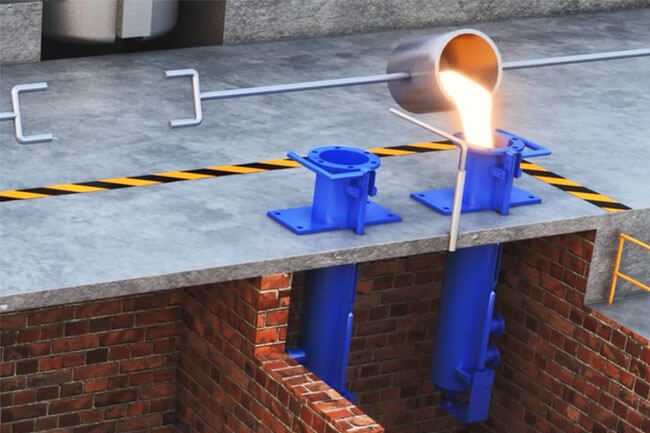Vertical casting is a metal casting process where molten metal is poured into a vertically-oriented mold to create a solid metal object. The mold is typically made of two parts that come together to create a cavity in the shape of the desired product.
The molten metal is poured into the mold from the top and allowed to cool and solidify. As the liquid metal cools and hardens inside the mold, it takes on the shape of the cavity and forms a solid metal object. After the metal has completely solidified, the mold is opened, and the newly formed object is removed.
Vertical casting is used to produce complex metal parts such as engine blocks, cylinder heads, pipe fittings, and more. It is widely used in manufacturing industries that require high-strength metal components with excellent mechanical properties such as strength, durability, and heat resistance.
It has several advantages over other types of casting processes.
Firstly, it can produce castings with a high degree of accuracy and shape complexity.
Secondly, it can produce castings with excellent mechanical properties, making it ideal for producing components for demanding applications.
Finally, vertical casting is a highly efficient process, with low energy consumption and minimal material waste, making it a cost-effective solution for many industrial applications.
A vertical casting machine is a type of machine used to produce metal tubes or concentric cylindrical metal parts. As the name suggests, this machine is positioned vertically and is used to inject molten metal (such as copper, aluminum, etc.) into a long and thin mold. Gravity and inertia forces are then used to cause the molten metal to flow and solidify into the desired shape. Vertical casting machines typically consist of four main components: a furnace (used to heat and melt the metal), a mold (used to inject and shape the metal), a cooling tower (used to cool and solidify the metal), and a cutting machine (used to cut metal tubes or parts).

This type of machine is widely used in various metal processing industries such as copper or aluminum tube manufacturing and the manufacturing of electrical equipment, aerospace, automotive parts, and other metal products. Compared with horizontal casting machines, products produced by vertical casting machines are more uniform, and defects are less likely to occur, making them widely used in various manufacturing applications.
The main function of a vertical casting machine is to produce metal parts or tubes with a precise shape and diameter. The machine achieves this by heating the raw material (usually metal ingots or scrap metal) in a furnace, melting it into a liquid state, and then injecting the liquid metal into a pre-designed mold.
As the mold is filled with molten metal, it gradually cools and solidifies, forming the desired shape of the final product. After the metal has completely solidified, the mold is opened, and the newly-formed metal part or tube is removed.
Vertical casting machines are widely used in industries such as aerospace, automotive, construction, and more. They often produce high-precision metal components that require excellent mechanical properties, such as strength, durability, and corrosion resistance. Some common applications of vertical casting machines include the production of copper or aluminum tubes, engine blocks, cylinder heads, and other mechanical parts.
Please send us your request and we reply to you with in 24 hours.
Submit Request